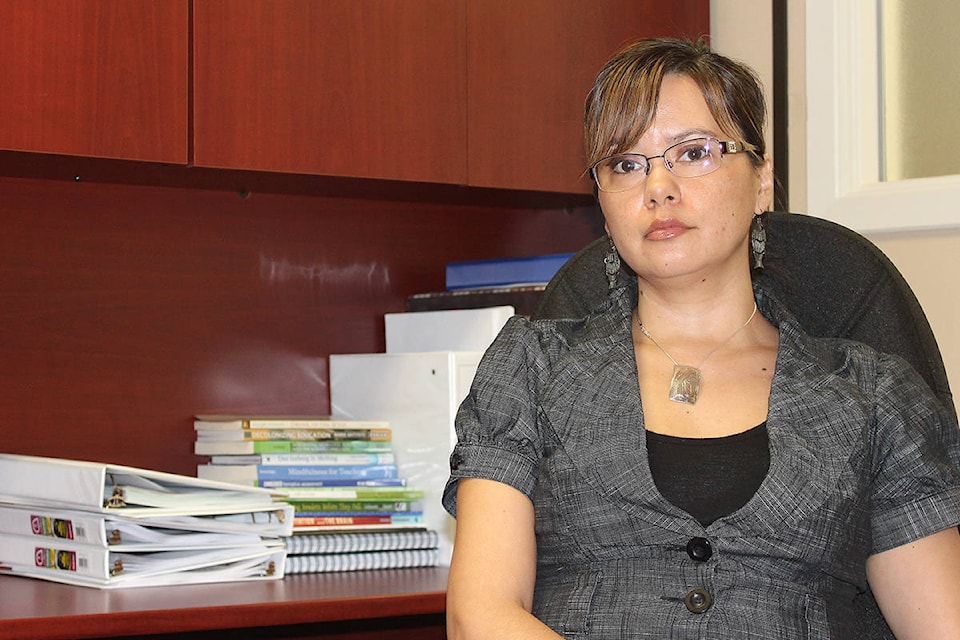Nanaimo school district and stakeholders are seeking to reverse declining aboriginal graduation rates.
While the district hit the 63.9 per cent mark back in 2013-14, the grad rate has seen a two-year decline, dropping to 57.7 per cent in 2014-15 and most recently to 56.4 per cent in 2015-16.
Nanaimo school district’s overall graduation rate for 2015/16 was 72.6 per cent.
The overall provincial 2015/16 graduation rate was 83.6 per cent, while the aboriginal rate was 63.8 per cent.
The aboriginal cohort of students expected to graduate in 2015-16 was 204. Anne Tenning, district vice-principal of aboriginal education, said a few students could have an impact on the overall percentage and the district isn’t overly concerned because of that.
“When we look at our aboriginal six-year completion rates over the past five years, with 2011-12 having a [49.9 per cent] completion rate and we’re still, over the five years, averaging 56.8, so it still is going up overall,” said Tenning. “We know that there’s great room for improvement with that number and we do hope to see it continue to go up, but we’re still happy with direction that it is going.”
Support for secondary school students include aboriginal education teachers and staff and Hul’q’umin’um classes. Tenning said aboriginal students are transitioning from grade to grade successfully, but are hitting a wall in Grade 12.
The district isn’t sure why Grade 12 is a stumbling block, Tenning said, but it wants to focus on support for Grade 12 to ensure students see their schooling through to the end. Currently, there are three aboriginal education support teachers for the district’s six high schools.
“Our plan for next year is [aboriginal education] has given additional time to those aboriginal support teachers so that they can be at one school full time. Not full time out of Ab-Ed; about three-quarter time Ab-Ed and the rest of the time the hope is they’ll get some regular teaching blocks at the high schools … so there’s a greater daily continuum of support,” said Tenning.
More teachers are headed to the district following a Supreme Court of Canada decision related to class size and composition, and while Tenning said it won’t affect aboriginal education staffing specifically, it will be beneficial.
“The aboriginal education program is funded through targeted dollars which is a completely separate set of funding … Generally, it’ll have an anticipated benefit for all students in that it’s addressing class size and composition. So hopefully, it will create improved learning conditions for all students, including those of aboriginal ancestry,” Tenning said.
Chris Beaton, Nanaimo Aboriginal Centre executive director, doesn’t know why the rates are declining, but said a comprehensive engagement process with aboriginal families, students and community organizations is needed.
“I think it’s a question to the entire community, not just the school district, but to say, ‘What more can we be doing?’ because this is not something we want,” said Beaton. “We don’t want to see this downward trend. We know that we’re still 25 or 30 per cent below the provincial grad rates for all students and it’s just not acceptable. We were hoping to achieve parity and again, we’re going in the wrong direction.”
reporter@nanaimobulletin.com
